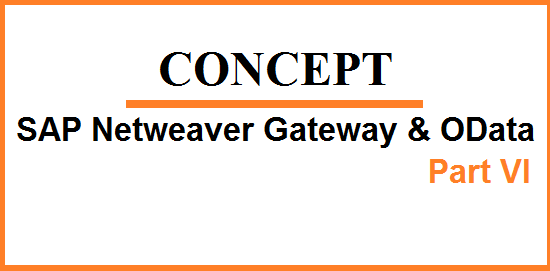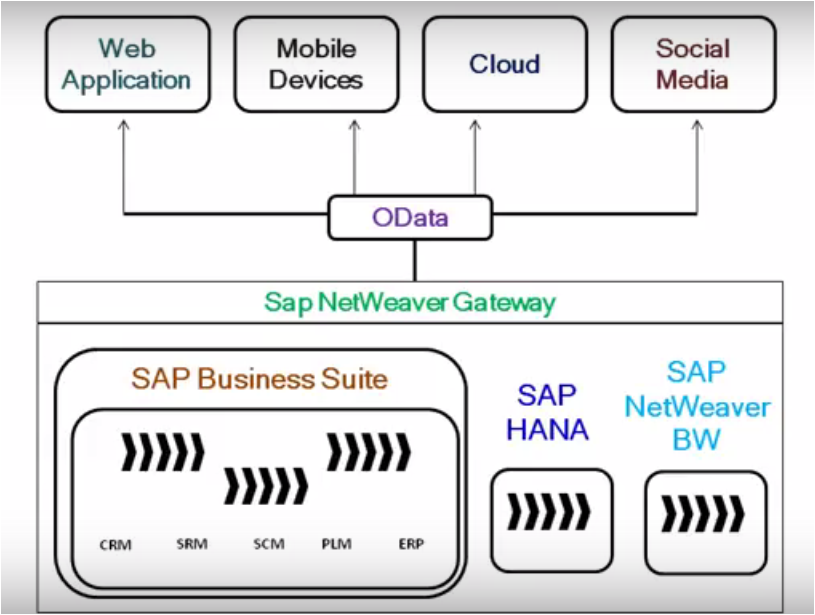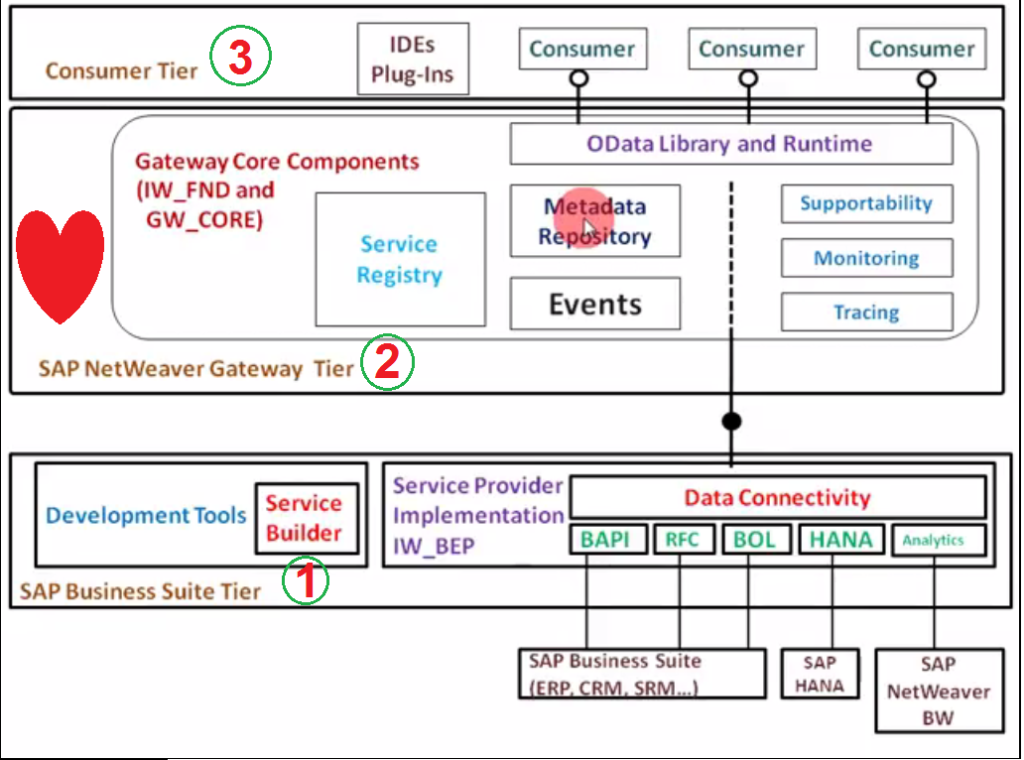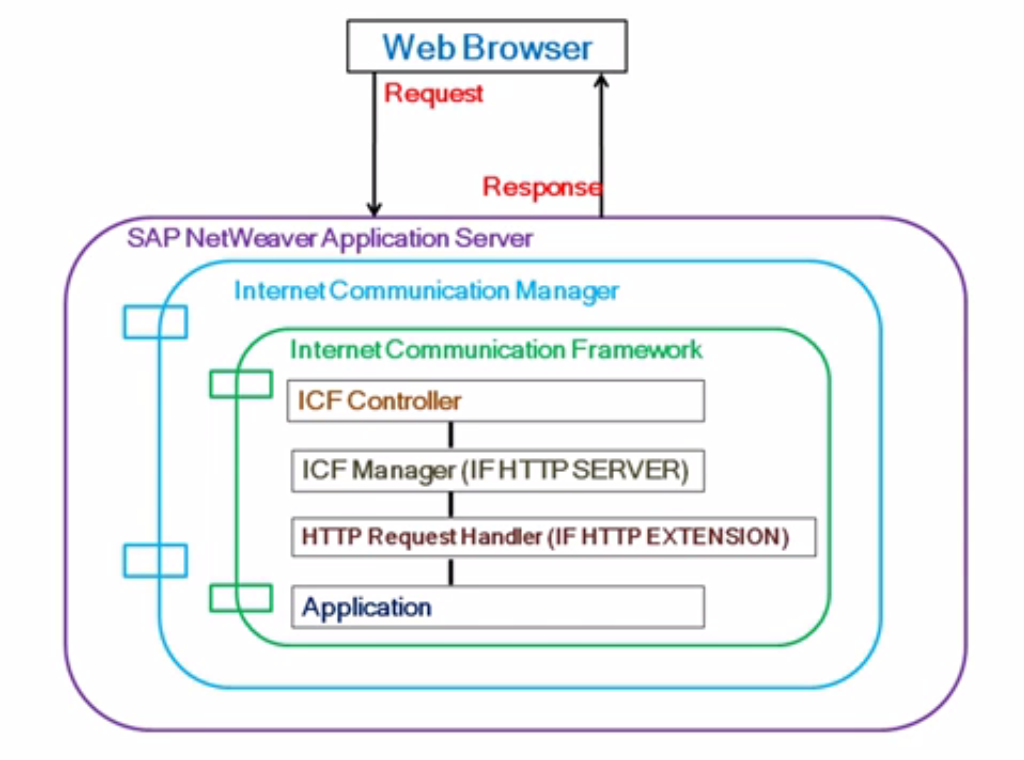
We performed some hands-on learning with some technical insights. For ABAPers those tutorials would be beneficial and enough but there are some terminologies and jargons we should know so that we can express what we know. And we can participate in the discussions and positive debates. The below commonly asked concepts might help you in understanding the terminologies already demonstrated in earlier parts even better.
Some of you might feel, this post should be the first article in the series. You are right my friend. Everyone put this topic in their introduction part. But at SAPSPOT, we show the real stuffs (hands-on SAP) first and give you the fundamentals after that we beat around the bush to provide more clarity.
Who developed OData?
Ans: Microsoft, 2007.
Who were all the main players in standardizing the OData?
Ans: Microsoft, IBM and SAP, along with Citrix, Progressive Software, WSO2.
Does Microsoft manage OData now or some other organization?
Ans: Now OData is managed by the Oasis Organisation (Organization for the Advancement of Structured Information Standards).
What is the benefit of OData?
Ans:
• OData is lightweight and is built on the HTTP protocol which allows database-like access to data via the web
• Decouples the data provisioning from the UI designer by providing a bridge between SAP developers and UI designer(non-SAP developers)
• It supports multichannel access to SAP data as it is supported by multiple platforms
• The standard address representation or resource is the URI (Uniform Resource Identifier) and all players can easily access it
• XML-based Atom Pub format and the JSON format is popular industry-wide used formats which OData supports. This makes it easy to learn, understand, connect and consume.
• OData messages are self-describing and hence all non-SAP developers are able to understand the content of the OData message without the need to have any knowledge of how SAP ERP system works.
• There is no expense associated with the use of OData. It is open and anyone can use it with no cost or license agreement.
• OData is extensible.
When was SAP Netweaver Gateway Launched?
Ans: May 2011.
What is SAP Netweaver Gateway?
Ans: It is a technology which provides a simple way connect to SAP Software from devices, environments and platforms based on common market/industry standards. In other words, it is a platform which allows connectivity to SAP Applications using any programming language or model without the need of prior SAP knowledge.
As we repeatedly said in all our previous articles, SAP Netweaver Gateway is a way (gate) or window for the outer world to peep into SAP. With the help of SAP Netweaver Gateway, front end developer of non-SAP system can develop applications which can consume data from SAP and that too without any knowledge of SAP.
It would not be wrong if we say SAP Netweaver Gateway is a platform which exposes all the back-end SAP data as OData which can be easily consumed by outside non-SAP world. SAP Netweaver Gateway unifies access to SAP data and processes via OData protocol.
What is the difference between OData and OData Service?
Ans: OData is a web protocol for retrieving and updating data. It is built on commonly known and extensively used industry standards like XML, JSON, which makes it easier to use and understand. While OData Service implements OData protocol and expose endpoints which allow access to SAP Applications and Data.

What is the benefit of SAP Netweaver Gateway?
Ans:
• SAP Netweaver Gateway makes it possible to provide a single solution to multiple consumers via OData Services. So point to point solution which can be complex and expensive can be avoided and replaced with SAP Netweaver Gateway and OData Service single point solution.
• The frontend can be any device or technology i.e. backend developers (ABAPers) can create OData services without worrying who and what frontend technology would consume them. So, there can be segregation of duties of Frontend and Backend Developers.
• Installation of SAP Netweaver Gateway is simple and Non-Disruptive (zero down time)
• Fulfills all requirements of modern business applications i.e. End User Expectation and Business Application Requirement.
What is the architecture of SAP Netweaver Gateway?
Ans: Like SAP, SAP Netweaver Gateway’s Architecture also consists of 3 Tiers.
• The SAP Business Suit Tier (Backend)
• The SAP Netweaver Gateway Tier (Heart + Middle Man)
• The Consumer Tier (Frontend)

Tier 1: SAP Business Suit Tier
• Application Data resides here and so also the business logic.
• It consists of Development Tools (Service Builder i.e. T-code SEGW) and Service Provider Implementation based on the Add-on IW_BEP (Business Enablement & Event Provisioning).
• Service Provider Implementation in turn, provides connectivity to SAP Business Suit system and can connect to a variety of SAP Interfaces such as BAPIs, RFCs, BW, HANA, BOL etc.
Tier 2: SAP Netweaver Gateway Tier
• Holds major part of Netweaver Gateway functionalities and Components including core component
• Connecting link between Business Suit Layer and Consumer Layer
• Provides tools for creation and development of services
• Service Registry stores the linkage between the OData Service and the actual implementation of the service
• Consists of Runtime Components, Metadata Components and OData Library
Runtime Component:
Consists of OData specific runtime that processes OData requests and functionality to expose OData services
Metadata Component:
Manages metadata that describes OData models that are exposed as OData Service document and OData Service metadata document
OData Library:
Consists of SAP specific metadata that consumes SAP Business data retrieved from SAP Data Dictionary.
Tier 3: Consumer Tier
• Are UI-centric clients viz Web applications, Enterprise software, Desktops, Tablets, Mobile devices.
• Actual consumption of SAP Netweaver Gateway service takes place in Consumer layer
• Can create applications which can easily and quickly consume services
• Two types of components are found in Consumer Layer.
i) SAP Netweaver Gateway Consumer
ii) Integrated Development Environments (IDEs) – Standard environments like Eclipse or MS Visual Studio.
How does SAP Netweaver Application Server communicate with Web Browser?
Ans: Through ICM (Internet Communication Manager).
ICM contains the TCP/IP(Transmission Control Protocol/Internet Protocol) basic function and thus SMTP(Simple Mail Transfer Protocol) communication with SAP Netweaver Application Server is possible.

This is one of the rare articles on SAPSPOT which is purely theoretical. Although we believe more on hands-on technical knowledge but at times we need to know how to articulate our technical concepts correctly.









